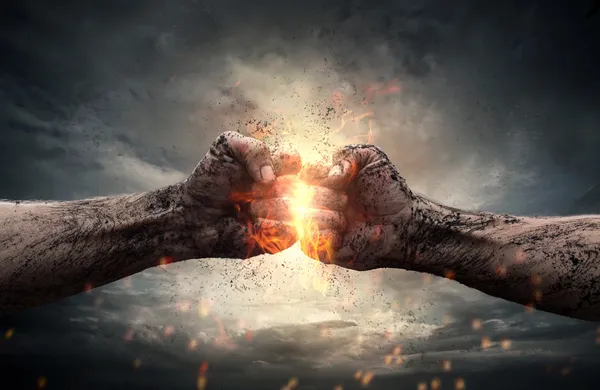We play movies in our minds daily. We play potential scenarios unfolding or that have unfolded. Playbacks of “audio tracks” that were said to us, that we said to others. Feelings that we re-live from both past traumas and past joys. They impact our states, frames, triggers, and emotions. What we allow in our heads at any point during the day can shift our thinking and affect our behavior.
I equate this in the same way that movies, television programs, series, documentaries affect the way we think on a variety of things. If watching horror movies gives you anxiety, paranoia, and causes you to look at everyday people with a skeptical, distrusting eye…do you change permanently your entire view of humanity based on Hollywood hyperbole? Or do you stop watching horror movies that put you in an unhealthy state?

This is actually an area I feel quite comfortable talking about as it’s been a lifelong problem for me, personally. Some of the regular favorites include: “I’m not capable”, “This won’t work”, “That can’t last”, “I can’t take this guy”, “That’d never happen”, “I’m not qualified as a father.” And so-on-and-so-forth. I then proceed to play the “video” of what that non-reality would look like in my mind. What then happens is a perceived actuality, where the untruth becomes so vivid your emotions boil over and make their way into the really-real world – affecting your interpersonal relationships, behavior, capability, and trust. Oh, right, and start becoming a burden to others around you who had mistakenly thought that everything was okay. (I think the correct term is “progressive self-sabotage.” I have a lot of experience with this. Seen professionals, I have. Taken medication, I had to. Suffered from depression, I willed myself. (And it all started upstairs, NOT on the solid ground of life itself.)
We all have “mental fortresses” that need to be protected at all times. Unwanted thoughts. Negative future outcome visualizations. Unconnected ideas that conclude in untruths that aren’t in existence and have little or no chance of being. All are extremely unhealthy to mental health, our personal relationships, and positive functioning throughout our days. Be constantly vigilant to the thoughts going on in your head. But how? There are the usual culprits: meditation, qi gong/tai chi, yoga, etc. that everybody claims to be supernatural and all-encompassing (cancer-curing, even), but let’s go down some different avenues as, for many, these methods don’t resonate particularly well with all the mysticism, magic, and exaggerated bullshit they often bring. Some like it a little more immediate, visceral, and knee-jerk.
- Mindfulness. Be conscious, aware. Make note (or notes) of what triggers especially explosive reactions, bad thoughts, and chain-thinking where multiple unrelated elements are made to make one big negative (and erroneous) conclusion. As you’re now conscious of them….you’re also capable of wiping them away with logic and pragmatism, reinforcing to yourself that they’re not happening (or not happening now, at least, and then is then), they’re not real, and by thinking this way you may actually will them to happen.
- Positive triggers. (“Triggers” is always linked with “bad” or “negative”) Link bad passing thoughts to a positive image, memory, trigger word, or physical action to gain back your thought process. Re-configuring connections with positive replacements for the negative ones can be a powerful tool to regain control of the gerbil wheel. I knew a guy who, every time he started thinking negatively, pinched the webbing between his thumb and index finger, and then automatically clearing his mind. Bad trigger-physical stimuli-overruling good trigger. Re-programming the system, as it were.
- Mantras. Verbal, and achievable, reinforcement of a mission statement, general or specific. Out loud. Often. To put that mission back at the forefront of current thought. If done effectively – and an important part of that is their being achievable – mantras can start to change inner-dialogue.
- Exercise. I find when I go out for a long run, strength exercises, stretching….immediately the daily stresses and annoyances part ways with my head. Exercise cleanses and much science is starting to back this in a profound way. Movement is life and can have immediate effects on your state-of-mind. So move. Run. Walk. Train. Play. Dance. Jump. Roll. Push. Pull. Whatever. Get moving. Now. Not soon. Or one day. Or tomorrow. Or later.
- Breathing. Pick your rhythm, one that’s comfortable and natural to your breathing style. There are a hundred different “top-level” breathing methods that claim catch-all effectiveness on the market. None of them know you, your physical condition, lung-size, pace, cardiovascular system. Pick a rhythm that you can sync your system too quickly and effectively when blood pressure and heartbeat rise from inner thoughts.

Negative self-talk can be debilitating. It can create imaginary crises, counter-productive states, and growing distrust with those you love or traditionally trust…..not to mention crumble your self-confidence and groundedness. However, unlike triggers, they’re usually not immediate and explosive – they’re often slow-building and do their cumulative damage over time, which also means that preparing for them can offer some solutions that are also progressive and easier to implement – if you’re adherent to them.
Remember, only you have final say as to what’s put in your mind. As the saying goes, don’t let anyone else – or anything – rent space in your head. Especially if they’re imaginary or self-defeating.




:max_bytes(150000):strip_icc()/MissionStatement4-56a82f915f9b58b7d0f16217.jpg)









